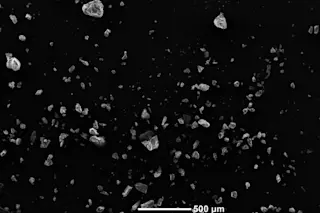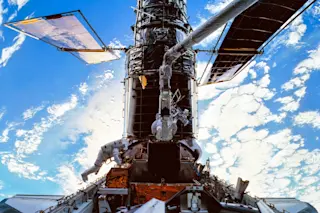I’ve whipped up meals in fancy copper saucepans, in battered woks, and in my grandfather’s old iron skillet, but never before have I used a syringe to make dinner. There I was, feeling like a cross between a superstar chef and a crack addict, madly jabbing a needle into a scrunched-up pouch of freeze-dried NASA shrimp cocktail, injecting a bit of water, and watching the water dribble uselessly back out. Welcome to space—the final food frontier.
Since the days of Project Mercury’s squeeze tubes, the food scientists at Johnson Space Center have come back to Earth a bit. Astronauts flying the space shuttle or working the International Space Station (ISS) can choose among 180 food and beverage items. Their menus are routinely reviewed by nutritionists—but rarely by food critics. That’s where I come in, to investigate an oft-overlooked but essential aspect of life in space.
With a dozen rations to ...














